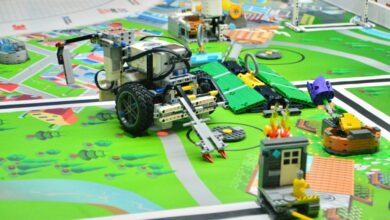New compound eye design could provide inexpensive way to give robots insect-like vision

× close
A team of engineers and roboticists at Hong Kong University of Science and Technology has developed an electronic compound eye design to give robots the ability to swarm efficiently and inexpensively.
In their paper published in the journal Science Robotics, the group describes the inspiration for the design and how well it worked when tested in a flying robot.
Most robot eyes are based on the standard camera concept—images are captured using a lens that allows for high-resolution processing. But this approach is expensive. For that reason, roboticists seek to build robots with compound eyes, similar to those found in many insects.
Compound eyes, as the name suggests, have multiple small lenses covering a hemisphere—in insects, the images are stitched together in the brain, allowing the insect to see. Doing the same with electronic eyes has proven to be a formidable task because of the problem of affixing flat lenses onto a curved surface. The team in Hong Kong has overcome this problem with a completely different approach.
To create their compound eye, the research team started with a plastic hemisphere with multiple pinholes drilled through its surface to allow light to enter. They then plugged each of the holes with a perovskite nanowire that directs the light onto an individual light sensor. All the light sensors were then connected to a central processer, which, like the insect eye, stitches the images together to form unified images.
The design, the researchers claim, allows for an inexpensive electronic eye for use in certain types of robots. They note that their design has a field of view of 140 degrees; when paired with another of the same type of eye, the field increases to 220 degrees.
To test their design, the team installed a pair of the compound eyes onto a flying drone, which they used to track the movements of a four-legged walking robot. They suggest their design would likely be most suitable for robots that fly together as a swarm or perhaps be used in autonomous vehicles.
More information:
Yu Zhou et al, An ultrawide field-of-view pinhole compound eye using hemispherical nanowire array for robot vision, Science Robotics (2024). DOI: 10.1126/scirobotics.adi8666
Journal information:
Science Robotics
© 2024 Science X Network



